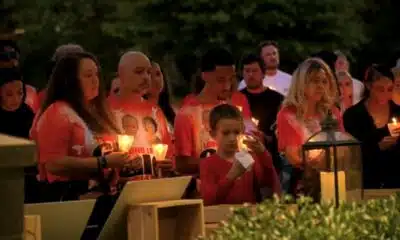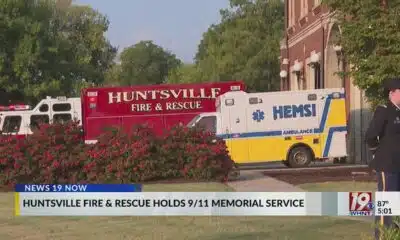News from the South - North Carolina News Feed
Medical Examiner’s list paints grim picture of causes of Helene deaths • Asheville Watchdog
A 4-year-old girl died in Catawba County in a 2-vehicle crash. An 82-year-old man was killed in Buncombe County by a landslide and floodwaters. A 51-year-old man died in Mitchell County when a tree limb struck him.
These are just three of the 95 deaths chronicled in an Oct. 16 tally from the North Carolina Department of Health and Human Services obtained Wednesday by Asheville Watchdog, representing the most comprehensive accounting of Helene’s death toll thus far.
According to the agency, Buncombe County suffered 42 deaths, the highest toll of the 21 counties listed. Yancey County had the next highest, with 11, followed by seven in Henderson County. The ages of the dead across the 21 counties ranged from 4 to 91.
“Each decedent is being tracked and cared for at one of two locations — Asheville and the Office of the Chief Medical Examiner (OCME) in Raleigh,” NCDHHS spokesperson Kelly Haight Connor said. “The more complex cases are being sent to Raleigh for additional examination and confirmation of identification.”
The NCDHHS list gave each victim’s age, the day they died and the circumstances of their death. It also broke down the official causes of deaths thus far:
- Motor vehicle drownings: 4
- Motor vehicle crash (includes hydroplane cases): 3
- Wind/tree trauma: 6
- Drowning: 20
- Landslide: 11
- Blunt force injuries: 11
- Unknown circumstances: 34
- Other: 5
- Environmental exposure: 1
“There are complex storm-related deaths in which the exact circumstances are not immediately known,” Connor said. “These complex cases are initially classified as ‘Unknown’ and currently total 34. A team of trained forensic pathologists are working each case to determine the exact cause of death; when done, those deaths will be reclassified and added to the appropriate category.”

In the initial aftermath of the storm, Buncombe County Sheriff Quentin Miller provided updated death tolls for the county. His last count on Oct. 3 had reached 72.
When asked about the difference between the Miller’s and the state’s counts, sheriff’s office spokesperson Matthew Marshall said, “We are working on getting you information regarding this discrepancy,” and deferred to NCDHHS.
“We do not have any information about how Buncombe County was determining fatality numbers for the death totals they were reporting,” said Connor. “We understand that Buncombe County decided to stop their independent reporting as of last week and are relying on the state to report storm-related deaths.”
She said medical examiners are relying on guidance from the federal Centers for Disease Control in attributing deaths as directly or indirectly caused by the storm.
“Cases are being thoroughly investigated to determine the cause and manner of death and if the storm-related death was a direct cause [or] indirect,“ Haight said. “These are the deaths we report daily.”
Asheville Watchdog is a nonprofit news team producing stories that matter to Asheville and Buncombe County. Andrew R. Jones is a Watchdog investigative reporter. Email arjones@avlwatchdog.org. Investigative reporter Victoria A. Ifatusin joined us through a 12-month fellowship as part of the Scripps Howard Fund’s Roy W. Howard Fellowship program. You can reach her via email at vifatusin@avlwatchdog.org. The Watchdog’s local reporting during this crisis is made possible by donations from the community. To show your support for this vital public service go to avlwatchdog.org/support-our-publication/.
Related
The post Medical Examiner’s list paints grim picture of causes of Helene deaths • Asheville Watchdog appeared first on avlwatchdog.org
News from the South - North Carolina News Feed
White House officials hold prayer vigil for Charlie Kirk
SUMMARY: Republican lawmakers, conservative leaders, and Trump administration officials held a prayer vigil and memorial at the Kennedy Center honoring slain activist Charlie Kirk, founder of Turning Point USA. Kirk was killed in Utah, where memorials continue at Utah Valley University and Turning Point USA’s headquarters. Police say 22-year-old Tyler Robinson turned himself in but has not confessed or cooperated. Robinson’s roommate, his boyfriend who is transitioning, is cooperating with authorities. Investigators are examining messages Robinson allegedly sent on Discord joking about the shooting. Robinson faces charges including aggravated murder, obstruction of justice, and felony firearm discharge.
White House officials and Republican lawmakers gathered at the Kennedy Center at 6 p.m. to hold a prayer vigil in remembrance of conservative activist Charlie Kirk.
https://abc11.com/us-world/
Download: https://abc11.com/apps/
Like us on Facebook: https://www.facebook.com/ABC11/
Instagram: https://www.instagram.com/abc11_wtvd/
Threads: https://www.threads.net/@abc11_wtvd
TIKTOK: https://www.tiktok.com/@abc11_eyewitnessnews
News from the South - North Carolina News Feed
Family, friends hold candlelight vigil in honor of Giovanni Pelletier
SUMMARY: Family and friends held a candlelight vigil in Apex to honor Giovanni Pelletier, a Fuquay Varina High School graduate whose body was found last month in a Florida retention pond. Giovanni went missing while visiting family, after reportedly acting erratically and leaving his cousins’ car. Loved ones remembered his infectious smile, laughter, and loyal friendship, expressing how deeply he impacted their lives. His mother shared the family’s ongoing grief and search for answers as authorities continue investigating his death. Despite the sadness, the community’s support has provided comfort. A celebration of life mass is planned in Apex to further commemorate Giovanni’s memory.
“It’s good to know how loved someone is in their community.”
More: https://abc11.com/post/giovanni-pelletier-family-friends-hold-candlelight-vigil-honor-wake-teen-found-dead-florida/17811995/
Download: https://abc11.com/apps/
Like us on Facebook: https://www.facebook.com/ABC11/
Instagram: https://www.instagram.com/abc11_wtvd/
Threads: https://www.threads.net/@abc11_wtvd
TIKTOK: https://www.tiktok.com/@abc11_eyewitnessnews
News from the South - North Carolina News Feed
NC Courage wins 2-1 against Angel City FC
SUMMARY: The North Carolina Courage defeated Angel City FC 2-1 in Cary, ending their unbeaten streak. Monaca scored early at the 6th minute, followed by Bull City native Brianna Pinto’s goal at the 18th minute, securing a 2-0 halftime lead. Angel City intensified in the second half, scoring in the 88th minute, but the Courage held firm defensively to claim victory. Pinto expressed pride in the win, emphasizing the team’s unity and playoff ambitions. Nearly 8,000 fans attended. Coverage continues tonight at 11, alongside college football updates, including the Tar Heels vs. Richmond game live from Chapel Hill.
Saturday’s win was crucial for the Courage as the regular season starts to wind down.
https://abc11.com/post/north-carolina-courage-wins-2-1-angel-city-fc/17810234/
Download: https://abc11.com/apps/
Like us on Facebook: https://www.facebook.com/ABC11/
Instagram: https://www.instagram.com/abc11_wtvd/
Threads: https://www.threads.net/@abc11_wtvd
TIKTOK: https://www.tiktok.com/@abc11_eyewitnessnews
-
News from the South - North Carolina News Feed6 days ago
What we know about Charlie Kirk shooting suspect, how he was caught
-
News from the South - North Carolina News Feed6 days ago
Federal hate crime charge sought in Charlotte stabbing | North Carolina
-
Our Mississippi Home5 days ago
Screech Owls – Small but Cute
-
News from the South - Arkansas News Feed6 days ago
NW Arkansas Championship expected to bring money to Rogers
-
News from the South - Louisiana News Feed7 days ago
Haynes wanted in on Wildlife bribery scheme too, informant says
-
News from the South - Alabama News Feed7 days ago
Huntsville Fire & Rescue Holds 9/11 Memorial Service | Sept. 11, 2025 | News 19 at 5 p.m.
-
News from the South - North Carolina News Feed6 days ago
Under pressure, some immigrants are leaving American dreams behind
-
News from the South - Texas News Feed6 days ago
Safe Central Texas meet-up spots for online purchases
















































